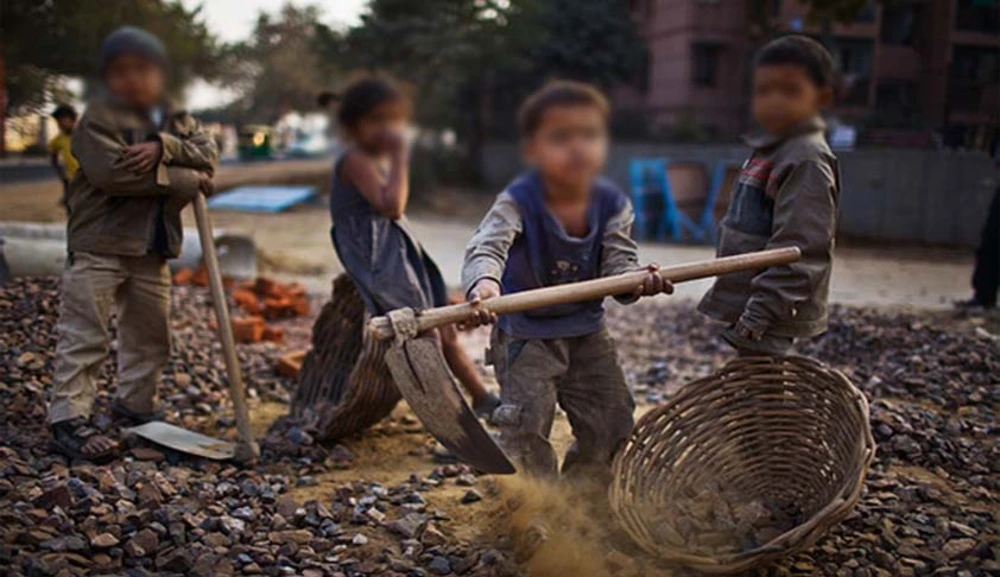The parliamentary panel’s recent report sheds light on the complexities and challenges in eliminating child labor, emphasizing the crucial need for a uniform definition of ‘child’ across various legislations. Despite efforts to curb child labor by 2025, the report points out existing ambiguities that hinder the effective implementation of policies.
Current Legal Landscape
The report highlights discrepancies in the definition of a ‘child’ under different laws, such as the Child and Adolescent Labour (Prohibition and Regulation) Act, 1986 (CALPRA), Right of Children to Free and Compulsory Education Act, 2009, Minimum Wages Act, 1948, and the Juvenile Justice (Care and Protection of Children) Act, 2015. These variations create confusion and challenges in enforcing laws consistently.
Age Disparities
One major concern raised by the panel is the age variations in different acts. For instance, CALPRA defines a ‘child’ as someone who has not completed their fourteenth year, while the Juvenile Justice Act considers individuals below eighteen as children. The lack of a standardized age definition contributes to the complexity of implementing child labor elimination policies.
Inconsistencies in Offense Categorization
The report notes that the employment of children is treated differently under CALPRA and the Juvenile Justice Act, where it is categorized as a cognizable and non-cognizable offense, respectively. This disparity can lead to confusion and delays in delivering justice for affected children.
Policy Recommendations
The parliamentary panel suggests several crucial policy changes to address these issues. First, it calls for a comprehensive examination of age-determination criteria across relevant acts to ensure consistency. Additionally, it recommends a review of offense categorization under CALPRA and the Juvenile Justice Act to eliminate any ambiguity and streamline legal procedures.
Enhanced Fines and Stricter Punishments
To strengthen deterrence, the panel proposes a substantial increase in fines for child labor violations. It advocates for fines to be proportionate to inflation, emphasizing the importance of securing the future of rescued children through timely deposit of fines. The report also suggests incorporating stricter penalties, such as license cancellation and property attachment, to reinforce a zero-tolerance approach to child labor.
District-Level: Funds and Accountability
Recognizing the need for immediate relief and rehabilitation, the panel recommends the creation of district-level funds for child laborers. These funds, inspired by provisions for bonded labor rehabilitation, aim to provide financial support for rescued children, especially those trafficked or repatriated from other states. The report also stresses the importance of holding not only employers but also principal employers and traffickers accountable for child labor.
Child-Friendly: Legal Mechanisms
To enhance reporting and streamline efforts against child labor, the panel suggests the establishment of child-friendly police stations and courts. It emphasizes the need for police accountability in reporting instances of children selling goods or begging at traffic lights, proposing a detailed Standard Operating Procedure (SOP) for effective implementation.
National Level: Child Tracking Mechanism
In a visionary recommendation, the panel proposes the establishment of a National Level Child Tracking Mechanism. This mechanism aims to enhance coordination among states and the Centre, utilizing digital modes for efficient monitoring and reporting at the district level. The envisioned mechanism seeks to improve prevention, tracing, tracking, rescue, rehabilitation, and reintegration efforts for rescued children.
Winding it up
The parliamentary panel’s report serves as a comprehensive roadmap for addressing ambiguities in child labor laws. By advocating for uniform definitions, enhanced fines, stricter punishments, and child-friendly legal mechanisms, the recommendations strive to create a more robust and cohesive legal framework. As the nation works towards eliminating child labor, implementing these proposed reforms can significantly contribute to achieving this crucial goal.


